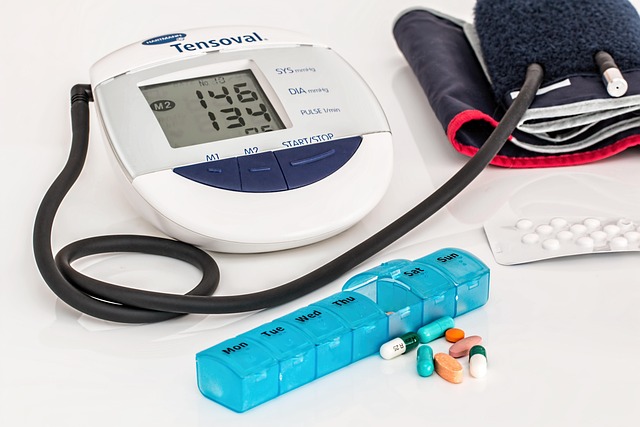Second Hand Small Portable Oxygen Devices Overview
As the demand for portable oxygen concentrators continues to grow, many individuals are turning to second-hand options to meet their respiratory needs. This comprehensive overview explores the world of used portable oxygen machines, offering insights into pricing, quality brands, and essential considerations for potential buyers.

What are the benefits of buying a second-hand portable oxygen concentrator?
Purchasing a pre-owned portable oxygen concentrator can offer several advantages. Firstly, cost savings are often substantial, with second-hand devices typically priced significantly lower than their brand-new counterparts. This affordability makes oxygen therapy more accessible to those on a tight budget. Additionally, buying used allows you to acquire higher-end models that might be out of reach when purchased new. Many second-hand devices still have plenty of life left, providing reliable performance for years to come. Lastly, opting for a pre-owned unit can be an environmentally conscious choice, reducing waste and extending the useful life of these valuable medical devices.
What are some good quality brand names for portable oxygen concentrators?
When considering a second-hand portable oxygen concentrator, focusing on reputable brands can help ensure quality and reliability. Some of the most trusted names in the industry include Inogen, Philips Respironics, ResMed, and SeQual Technologies. Inogen is known for its innovative and lightweight designs, while Philips Respironics offers a range of user-friendly options. ResMed has a reputation for producing high-performance devices, and SeQual Technologies is recognized for its rugged and durable concentrators. Other respected brands include CAIRE Inc., Precision Medical, and Drive DeVilbiss Healthcare. These manufacturers have established track records for producing reliable, efficient, and long-lasting portable oxygen devices.
What should you check before buying a second-hand portable oxygen device?
Before purchasing a used portable oxygen concentrator, there are several crucial factors to consider. First, verify the device’s age and usage history. Older units or those with excessive hours may require more maintenance or have a shorter remaining lifespan. Inspect the device thoroughly for any visible damage or signs of wear. Test the battery life and charging capabilities, as batteries often degrade over time. Check the oxygen output and flow settings to ensure they meet your prescribed needs. Review the maintenance history and ask for any available service records. Confirm that all necessary accessories, such as carrying cases and power supplies, are included. Lastly, inquire about any remaining warranty coverage or the possibility of purchasing an extended warranty for added peace of mind.
How do second-hand small portable oxygen prices compare to new devices?
The cost of second-hand portable oxygen concentrators can vary significantly based on factors such as brand, model, age, and condition. However, users can generally expect to save between 30% to 60% compared to the price of a new device. For example, a new high-end portable concentrator might retail for $2,500 to $3,500, while a comparable used model could be found for $1,200 to $2,000. Entry-level new units typically range from $1,500 to $2,500, with second-hand options available for $700 to $1,500. It’s important to note that prices can fluctuate based on market demand and availability.
| Brand | New Price Range | Used Price Range | Potential Savings |
|---|---|---|---|
| Inogen One G5 | $2,400 - $3,000 | $1,200 - $1,800 | 40% - 50% |
| Philips SimplyGo Mini | $2,300 - $2,800 | $1,100 - $1,600 | 45% - 55% |
| ResMed Mobi | $2,000 - $2,500 | $900 - $1,400 | 45% - 55% |
| SeQual eQuinox | $3,000 - $3,500 | $1,500 - $2,000 | 45% - 55% |
Prices, rates, or cost estimates mentioned in this article are based on the latest available information but may change over time. Independent research is advised before making financial decisions.
What are some unique considerations for portable oxygen users in the United States?
In the United States, portable oxygen users benefit from a well-developed healthcare system and regulatory framework. The Food and Drug Administration (FDA) oversees the safety and efficacy of oxygen devices, ensuring that even second-hand units meet certain standards. Many insurance plans, including Medicare, may cover the cost of oxygen therapy, although coverage for portable concentrators can vary. It’s essential to check with your insurance provider regarding coverage for both new and used devices. Additionally, the Americans with Disabilities Act (ADA) protects the rights of oxygen users, ensuring access to public spaces and accommodations for their medical needs. When traveling within the US, portable oxygen concentrator users can take advantage of the country’s extensive network of oxygen suppliers for maintenance or emergency support.
Where can you find reliable second-hand portable oxygen concentrators?
Finding a trustworthy source for second-hand portable oxygen concentrators is crucial. Medical equipment suppliers often offer reconditioned units that have been professionally inspected and refurbished. These can provide a good balance of cost savings and reliability. Online marketplaces specializing in medical equipment, such as Second Wind CPAP and Direct Home Medical, frequently list pre-owned devices. General e-commerce platforms like eBay and Amazon may also have listings, but buyers should exercise caution and thoroughly vet sellers. Local durable medical equipment (DME) providers sometimes offer trade-in programs or sell used units. Respiratory care centers and oxygen therapy clinics can be excellent resources for finding quality used devices or connecting with reputable sellers. Regardless of the source, it’s advisable to request detailed information about the device’s history and condition before making a purchase.
In conclusion, second-hand portable oxygen concentrators offer a cost-effective solution for those in need of oxygen therapy. By focusing on reputable brands, thoroughly inspecting devices, and purchasing from reliable sources, users can find high-quality, affordable options to meet their respiratory needs. While the cost savings can be significant, it’s essential to balance price considerations with the device’s condition and performance to ensure safe and effective oxygen therapy.
This article is for informational purposes only and should not be considered medical advice. Please consult a qualified healthcare professional for personalized guidance and treatment.




